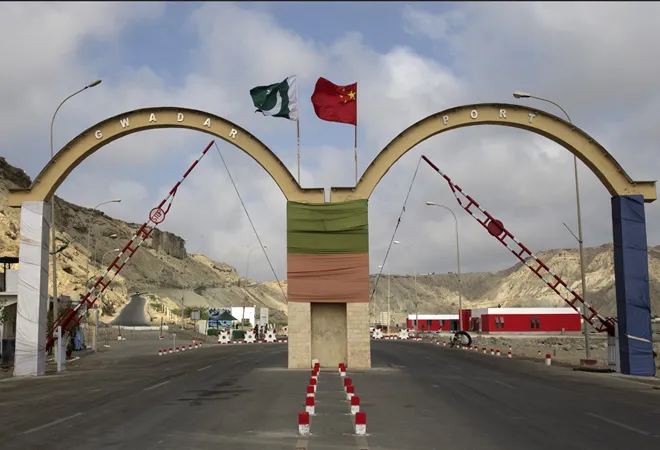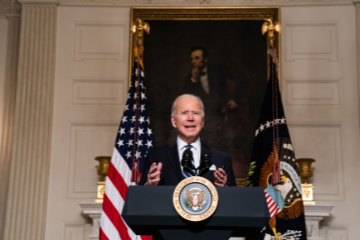
In 2015, great optimism surrounded the
China-Pakistan Economic Corridor (CPEC), with hopes that it would transform Pakistan into a formidable global player and a leading force in South Asia. However, what was initially seen as a well-intentioned effort to consolidate the relationship between the two countries has turned into one of the primary causes of Pakistan's decline. Although there were a few significant Chinese-backed infrastructure projects in Pakistan in the decade before CPEC, the Belt and Road Initiative (BRI) brought forth a new era for Pakistan's struggling public sector projects and its chronically weak power and transportation industries. These sectors have long relied on government subsidies, leading to budget deficits.
After China announced its intention to assist Pakistan and promote its ambitious
Silk Road Economic Belt initiative, CPEC quickly emerged as the flagship project of the BRI. After its introduction in May 2013 during Chinese Premier Li Keqiang's visit to Pakistan, the economic corridor was commended for its design, addressing Pakistan's infrastructure gaps, establishing industrial zones, and creating trade routes to China through the Gwadar Port, strategically located on the Arabian Sea. The project first required a substantial investment of
US$ 46 billion, which rapidly increased to US$ 62 billion in pledges or around 20 percent of Pakistan's GDP. It covered several prominent Early Harvest Projects (EHP) in a nation in desperate need of international investment.
India instead concentrated on its own connectivity initiatives, such as the International North-South Transport Corridor and the Chabahar port in Iran, although it lacks a comprehensive strategy to enhance regional connectivity.
From a geopolitical standpoint, India has been a vocal opponent of the BRI since its inception in 2013. India viewed one of the key components of the CPEC as a violation of its territorial integrity and sovereignty. Concerns included geopolitical ramifications in addition to India's claims on Pakistan-occupied Kashmir (PoK). The undertaking was viewed as a component of China's overarching plan to surround India and seize power in the area. Furthermore, it raised concerns about China gaining easy access to Pakistani ports and the potential establishment of a naval base in the region, raising major security concerns for India. India's approach of opposing the BRI and refraining from participating reduced its impact on the growth of regional infrastructure. India instead concentrated on its own connectivity initiatives, such as the International North-South Transport Corridor and the Chabahar port in Iran, although it lacks a comprehensive strategy to enhance regional connectivity.
With the introduction of the CPEC project, the people of Pakistan initially got hope and relief from the country's
persistent power and energy issues. Widespread blackouts due to crippling power shortages had paralysed economic activities and engulfed bustling market areas in darkness. The energy crisis stemmed from exorbitant energy rates charged by Independent Power Producers (IPPs), neglected power plants, deteriorating transmission lines, and years of populist government policies. For over three decades, citizens endured daily electricity outages lasting around 10 hours in urban areas and approximately 22 hours in rural regions. These power cuts disrupted revenue-generating markets, industries, educational institutions, healthcare facilities, and social activities.
Figure 1: Division of CPEC Projects
 Source: Planning Commission of Pakistan
Source: Planning Commission of Pakistan
China's initial focus on constructing
new coal-fired power plants within the framework of the CPEC was initially seen as a positive step. Late in 2021, however, China changed its story to reflect the objectives of the UN Climate Change Conference (COP26), committing to avoid developing coal-fired power plants overseas and striving for carbon neutrality. This shift had dire consequences for Pakistan's coal-dependent
power sector, as it halted or shelved ongoing CPEC projects aimed at expanding the country's power generation capacity by 20 gigawatts.
The economic viability of CPEC projects, coupled with Pakistan's ongoing financial distress and the country's efforts in the war on terror, further complicated the situation. Rumours of impropriety on the Chinese side added to the challenges faced, leading to delays in project implementation and a mounting burden of unproductive debt. While Pakistan's unsustainable external debt and economic difficulties predated the CPEC agreement, the initiative exacerbated the country's widening current account deficits and depleted foreign exchange reserves. Despite the
International Monetary Fund's (IMF) recommendations, Pakistan imported large volumes of materials for the projects before seeking a bailout worth
US$ 6.3 billion from the intergovernmental body.
The economic viability of CPEC projects, coupled with Pakistan's ongoing financial distress and the country's efforts in the war on terror, further complicated the situation.
The foundation of CPEC, which heavily relies on Chinese equity holdings in Pakistan's infrastructure projects, has made Pakistan liable for
80 percent of the investments related to the corridor. This has led to concerns that the former flagship initiative of BRI is flawed and a
costly policy misstep for China. China has repeatedly refused to defer or restructure pending debt repayments, fearing that it would set a precedent for other debtors and result in a collapse of bad loans. However, it is in China's interest to assist Pakistan in maintaining its image as a reliable ally to the developing world.
Given these circumstances, it is essential for economies in the region, particularly BRI countries like Pakistan, to carefully monitor and manage the share of
China's debt in their total external debt. Pakistan's involvement in CPEC has led to impractical projects heavily reliant on foreign loans, worsening the country's economic difficulties. Surging deficits in the trade balance and low levels of foreign direct investment (FDI) have been caused by the heavy reliance on external borrowing without addressing fundamental macroeconomic difficulties. Therefore, Pakistan needs to emphasise credit diversification and restructuring of its foreign debt to get a grip on its external sector and deal with the troubling contemporary macroeconomic issues.
(Note – For a more detailed analysis, please see ORF Occasional Paper No. 403 “Debt ad Infinitum: Pakistan’s Macroeconomic Catastrophe”)
Soumya Bhowmick is an Associate Fellow with the Centre for New Economic Diplomacy, at the Observer Research Foundation
The views expressed above belong to the author(s). ORF research and analyses now available on Telegram! Click here to access our curated content — blogs, longforms and interviews.



 In 2015, great optimism surrounded the
In 2015, great optimism surrounded the 
 PREV
PREV


